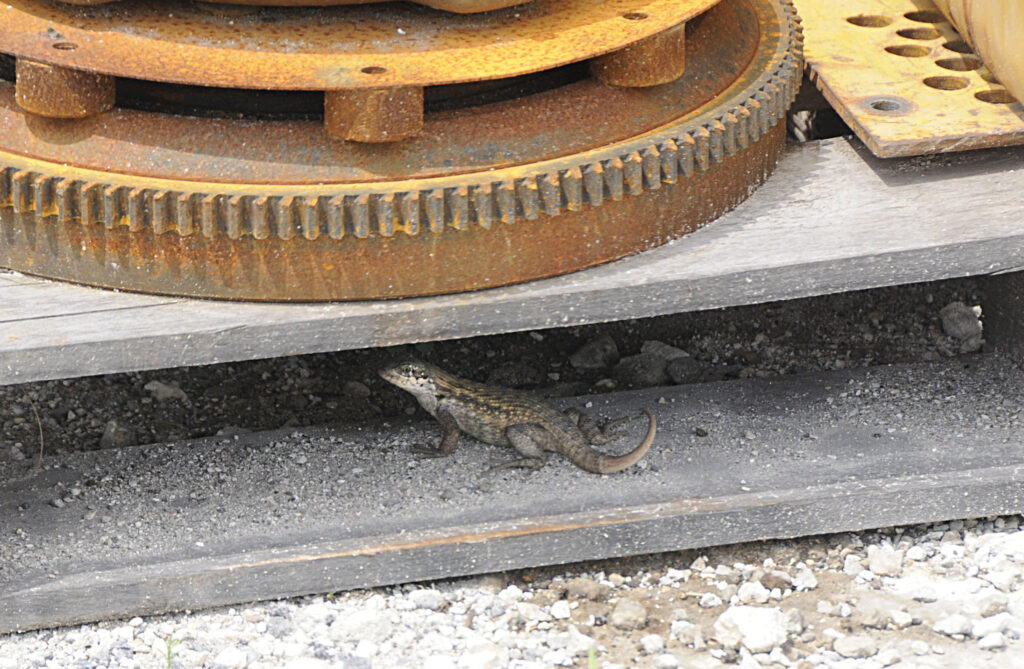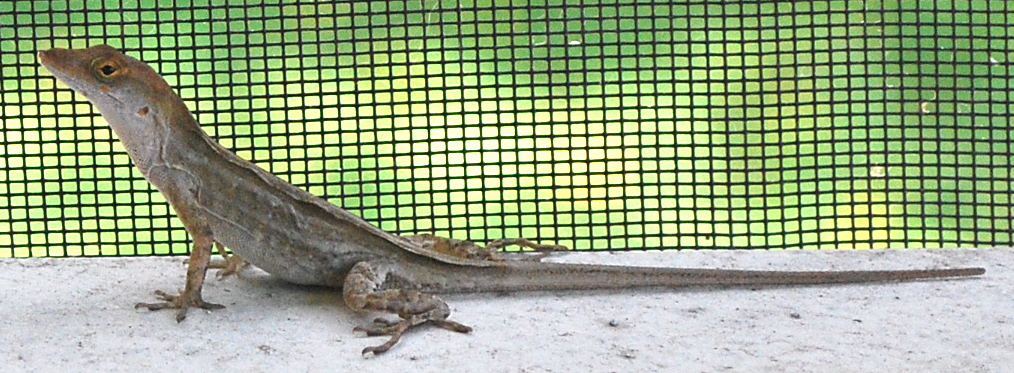Q: Can you help us prevent these small lizards from leaving their dirty leavings all over our entrance areas practically daily? It’s ugly and difficult to clean, especially if one steps in it accidentally. We’ve discussed it with our “bug man,” but he said there’s no way he knows that will solve our problem. Begone lizard! Let’s clean up around here. We are asking you for suggestions to help us.
Thank You,
Richard, via email
A: Oh my, a mess at the front door is annoying. Lizards are familiar sights in and around homes. The Florida Museum of Natural History Florida Lizards page lists more than 55 native and non-native species commonly known as lizards in Florida.

Even the invasive Brown Anole and Curly-tailed lizard are mostly considered beneficial residents to the landscape and garden and are the most visible lizard around my home and garden. However, in my younger years, the native green anole was common. Anoles, in particular, feed strictly on insects; Curly-tail lizards are opportunists and will eat just about anything but seem most fond of insects and carrion. Check out
Lizard poop is generally small-scale, dry pellets resembling fat rice grains. If the lizards are present in large numbers, the poop may accumulate daily in large enough quantities to be bothersome. There are no repellents to keep lizards away, but, like all creatures, remove the food source, and the critter goes away. One tactic is to turn off the front porch light to reduce the number of insects in the area.

However, I suspect the front porch poop-leaving culprit is something other than small lizards. Recently, I have been noticing larger droppings on my front walkway. The scat left behind was exceedingly generous, bigger than a quarter, tubular, and moist. These are the leavings of a Cane or Marine Toad and a strong candidate for producing plenty of messy droppings.
Once known as a Bufo toad, this large invasive species was brought to Florida to help control pests in sugar cane fields. It breeds all year in Florida and is infamous for the toxin produced from the large glands at the back of the head, which can irritate skin and kill dogs and cats if ingested.
The best deterrent for Cane toads is to remove food. However, they eat everything, including pet food. It is legal to terminate Cane toads humanely. However, be sure of the identification of the culprit; the native Southern toad looks similar but is smaller. For more information about toads and frogs, check out the University of Florida website, Frogs & Toads of Florida, or the Florida Museum of Natural History section on amphibians and reptiles.
Another possibility for the excess droppings at the front door is the Cuban tree frog. The arrival of this invasive species is often first noticed when other tree frogs, toads, and lizard populations decline. They are voracious and easily distinguished from other tree frogs. They are variable in color but primarily light green or tan in color. They are large, up to five inches in length.
Whatever is leaving the scat at the front door, there are a few choices for reducing the load. First, make sure food sources are eliminated. Next, humanly remove any invasive species that may have taken up residence. I found the Cuban tree frog had made a home on top of my porch light. However, sometimes, if the culprits are desirable neighbors, change your view of the droppings and consider them a sign of pest control at work.
Leave a Reply